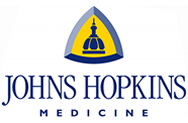Soft Tissue Deformities
Soft tissue deformities may involve the skin, subcutaneous tissue, underlying muscle or a combination of any of these elements. There are a number of syndromes such as hemifacial microsomia in which asymmetry of the soft tissue may be a component. However, the number one cause of facial soft tissue deformities is trauma. Traumatic facial injuries may be blunt, penetrating and/or avulsive in nature. An avulsion or loss of soft tissue may create a significant deformity which requires reconstruction. Generally the facial skeletal deformities are reconstructed first followed by correction of soft tissue problems.

One example of a severely deforming and psychologically crippling injury is the scalp avulsion. This presents a very challenging problem particularly if the avulsed portion is very large and cannot be replanted by microvascular technique. A new and innovative approach to this type of problem has been the use of the tissue expander. These expanders are much like deflated balloons placed beneath adjacent normal tissue. Over a period of weeks these expanders are gradually inflated, stretching the normal skin for use in reconstruction. An example of this technique is shown for reconstruction of the scalp.

Soft tissue tumors are another cause of facial deformities. Resection of either benign or malignant facial tumors can result in a significant cosmetic deformity. Craniofacial techniques can be used to help reconstruct these defects and restore facial appearance.

>




















